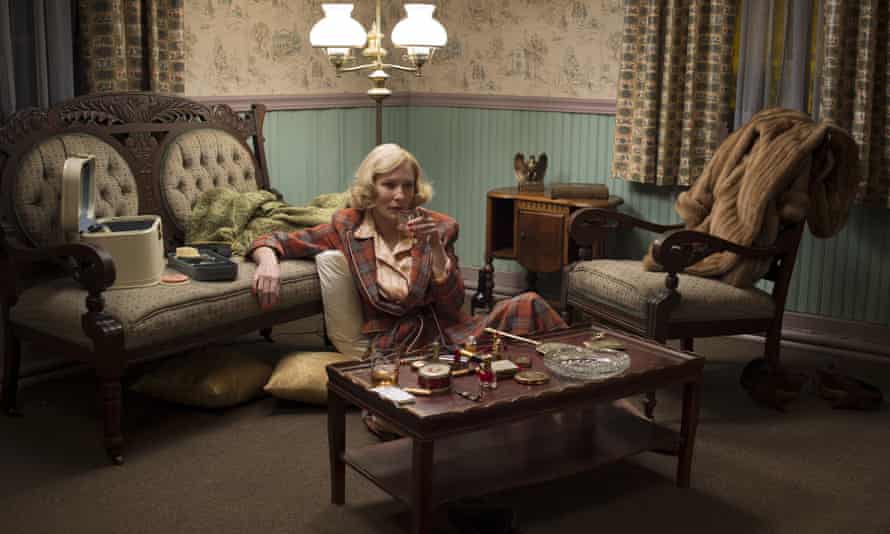Devils, Lusts and Strange Desires: The Life of Patricia Highsmith – review
When friends mean less than plots ... a flawed portrayal of the noir novelist as a figure bordering on the grotesque
Fri 22 Jan 2021 09.00 GMT
In middle age Patricia Highsmith perfected a particularly ghastly party trick. Invited to a swanky London dinner, she arrived with 30 “pet” snails in her handbag which she proceeded to tip out on to the table. The snails immediately started their determined looping across the linen tablecloth, leaving behind a lattice of silvery slime. Everyone, including Highsmith herself, pretended not to notice.
If Highsmith were simply a sociopathic alcoholic, and there’s plenty of evidence to suggest that she was, then this anecdote would be picturesque but not important. What makes it matter is the way it captures the uncanny menace at the heart of her most successful novels, Strangers on a Train (1951) and The Talented Mr Ripley (1955). There’s nothing intrinsically evil about snails, handbags, linen tablecloths or even swish dinner parties. But put them in the right, or rather wrong, order and you have the kind of insidious nightmare that becomes impossible to shake off. Graham Greene, an early fan of Highsmith’s, described her as “the poet of apprehension”. You could not read her, he said, without constantly checking over your shoulder.
It was Greene who also said that thing about writers needing a splinter of ice in their hearts, by which he meant the willingness to cannibalise real life, real relationships, real pain in the service of one’s art. Was he thinking of Highsmith? Certainly, on the evidence that Richard Bradford sets out here, Highsmith was an “emotional vandal”, who went out of her way to ruin the lives of her many lovers in order to generate ideas for plots. Whenever her emotional life looked like settling down – there were kind partners like stolid Doris and elegant Caroline who only wanted the best for her – she would do something appalling to ensure the maximum mayhem. There were suicide attempts, ménages à trois, restless flitting from house to house and boastful claims about having sex with 10 different woman in a single day. Much of it went straight into her novels.
Actually, before it went into her novels it went into her journals. There are 39 of these, all deposited in the Swiss Literary Archive, along with a huge tranche of diaries, correspondence and yet more notebooks. Highsmith’s archive ended up in Bern rather than at the famous Harry Ransom Library in her native Texas because she always felt more appreciated in Europe. Here she was treated as a serious “psychological” litterateur in the vein of Kafka and Camus, while America regarded her as a cack-handed thriller writer with the unfortunate knack of letting her baddies get off scot-free. And then there was the sex. When trying to publish her second novel in 1952, a lesbian romance with the biblically doomy title The Price of Salt, Highsmith’s agent advised her to avoid career suicide by using a nom de plume. Not until 1990 did the British publishers Bloomsbury bring out the book under Highsmith’s real name. They also changed its title to the jauntier-sounding Carol after the lead character who leaves her glossy marriage for an affair with an arty younger woman, based on Highsmith herself.

Carol was filmed by Todd Haynes in 2015 with Cate Blanchett in the title role, making it the third time that Highsmith’s psychologically complex and densely plotted novels hit cinematic pay dirt. In 1951 Alfred Hitchcock had made her debut Strangers on a Train into a wildly noirish suspense drama, while in 1999 Anthony Minghella flooded the screen with hallucinatory Mediterranean technicolour in The Talented Mr Ripley. The success of these film adaptations, Ripley and Carol in particular, account for the late flowering of Highsmith’s reputation. By the end of her life in 1995 she was selling more books – bad ones, actually, since her writing deteriorated sharply from her early 1950s heyday – than would have ever seemed possible.
All of this is fascinating, but it is not really new. Andrew Wilson wrote the first big biography of Highsmith in 2003 based on a meticulous fingertip search of the Bern archive buttressed by interviews with surviving lovers, many of whom have since died. Quite what Bradford brings to the table, unless it is to remind us that this month is Highsmith’s centenary, is unclear. Wilson worked hard to show how Highsmith’s psychic fractures were a consequence of being a clever, gay woman in newly Conservative postwar America. Bradford is much less interested in this sociological approach, preferring to pathologise Highsmith instead. At one level this makes sense – her virulent antisemitism, misogyny and general awfulness really can’t be explained away by cultural fault lines. But at the other it does mean that Bradford’s Highsmith becomes a figure bordering on the grotesque. There’s also something odd about the way he deals with what he terms Highsmith’s “lesbian inclinations”. One minute he sounds like a maiden aunt, the next like a voyeur who has triumphantly decoded evidence from her diaries about the size of her clitoris. The result is a biography that manages to be both plodding and salacious at the same time.
• Devils, Lusts and Strange Desires: The Life of Patricia Highsmith is published by Bloomsbury.
THE GUARDIAN


No comments:
Post a Comment